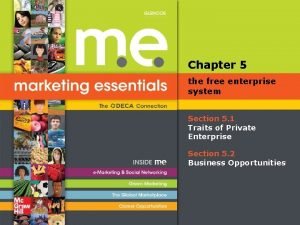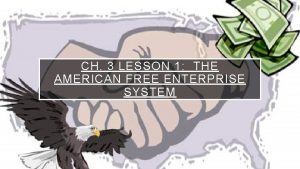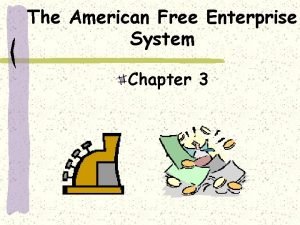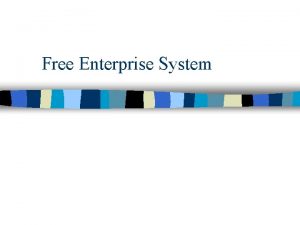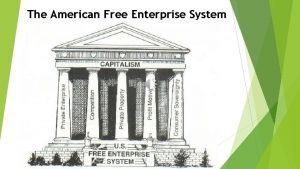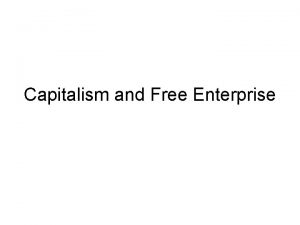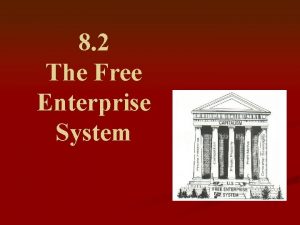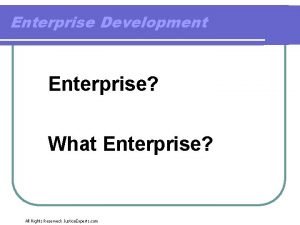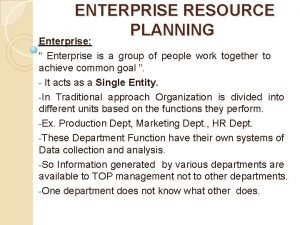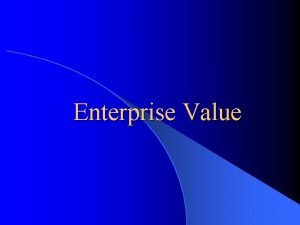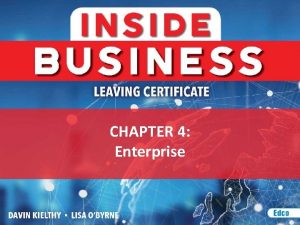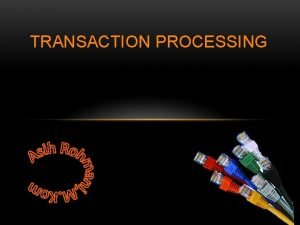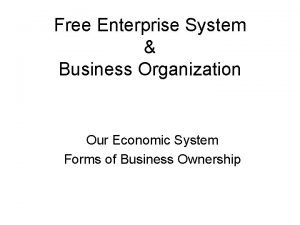AIM IS THE FREE ENTERPRISE SYSTEM REALLY FREE




















- Slides: 20

AIM: IS THE FREE ENTERPRISE SYSTEM REALLY FREE? Do Now: Think of a product that you use that was developed or modified as a result of some change in the marketplace. -Would this product have been developed in a command economy? Why or why not? -How does this product demonstrate a strength of the free enterprise system?

Economic Systems


Free Enterprise • If an economy has both capitalism and free markets • Resources are privately owned • Competition is allowed to flourish with a minimum of government interference • Characteristics 1. Economic Freedom 2. Voluntary exchange 3. Private property rights 4. The profit motive 5. Competition

• Individual Freedom • A Variety of Goods • Adapting to Change • Promoting Progress • Creation of Wealth Benefits of Free Enterprise Capitalism

• Uneven Economic Growth • Growing Gaps Between Rich and Poor • Large “Supply-Side” Tendencies • Rights and Responsibilities of Business Disadvantages of Free Enterprise Capitalism

American Economic and Social Goals 1. Economic Freedom 2. Economic Efficiency 3. Economic Equity 4. Economic Security 5. Full Employment 6. Price Stability 7. Economic Growth

Activity Directions Using China as a Case Study. Please complete the handout and submit answers to Ms. Rappoccio at the end of class.

AIM: HOW DO THE CHOICES THAT BUYERS AND SELLERS MAKE IMPACT THE MARKET? Do Now: With a partner, complete the First Come – First Serve Allocation Game

Individuals & Businesses in the Market • FACTOR MARKET • Resources (land, labor, capital, entrepreneurship) are bought and sold • PRODUCT MARKET • Goods and services are bought and sold

Individuals & Businesses in the Market • Given that the resources of individuals (and societies) are limited, decisions as to what goods and services will be produced and to whom to sell one’s resources are driven by numerous factors including a desire to derive the maximum benefit and thus the most efficient allocation of those resources.

Individuals & Businesses in the Market • The choices of buyers and sellers in the marketplace determine supply and demand, market prices, allocation of scarce resources, and the goods and services that are produced.

Individuals & Businesses in the Market • Consumers influence product availability and price through their purchasing power in the product market in a perfect world. Product market supply and demand determine product availability and pricing.

Individuals & Businesses in the Market • Businesses choose what to supply in the product market based on product market prices, available technology, and prices of factors of production. The prices of those factors are determined based on supply and demand in the factor market.

The Labor Market • The supply and demand of each factor market is directly related to employment. Debates surround various ways to minimize unemployment (frictional, structural, cyclical).

AIM: HOW DO ECONOMIC INDICATORS SHAPE THE DECISIONS THAT INDIVIDUALS AND BUSINESSES MAKE? DO NOW: What do you buy yourself when you’re happy/celebrating? What do you buy yourself when you’re upset?

NOTES: Please click on the following link and take notes on the economic indicators listed. You have 25 minutes (it will be timed and there may or may not be a quiz involved. ) http: //www. aaii. com/investing-basics/article/the-top-10 economic-indicators-what-to-watch-and-why

Economic Indicators Leading Indicators Lagging Indicators • An economic statistic that • an economic statistic that tends to predict future changes in the economic cycle. tends to have a delayed reaction to a change in the economic cycle.


Activity Directions: • 1. Google your assigned economic indicator. • 2. Research historic/economic meaning of indicator. • 3. Create a digital poster or full paragraph to express what this indicator represents and its implications for our economy (the more creative this is, the better you will score) • 4. Email completed work to msrappoccio@gmail. com
 Putting the enterprise into the enterprise system
Putting the enterprise into the enterprise system Putting the enterprise into the enterprise system
Putting the enterprise into the enterprise system Free enterprise and other economic systems
Free enterprise and other economic systems Chapter 5 the free enterprise system
Chapter 5 the free enterprise system Free enterprise system diagram
Free enterprise system diagram Free enterprise system benefits
Free enterprise system benefits Chapter 3 american free enterprise worksheet answers
Chapter 3 american free enterprise worksheet answers Hình ảnh bộ gõ cơ thể búng tay
Hình ảnh bộ gõ cơ thể búng tay Ng-html
Ng-html Bổ thể
Bổ thể Tỉ lệ cơ thể trẻ em
Tỉ lệ cơ thể trẻ em Voi kéo gỗ như thế nào
Voi kéo gỗ như thế nào Thang điểm glasgow
Thang điểm glasgow Alleluia hat len nguoi oi
Alleluia hat len nguoi oi Các môn thể thao bắt đầu bằng từ đua
Các môn thể thao bắt đầu bằng từ đua Thế nào là hệ số cao nhất
Thế nào là hệ số cao nhất Các châu lục và đại dương trên thế giới
Các châu lục và đại dương trên thế giới Công thức tiính động năng
Công thức tiính động năng Trời xanh đây là của chúng ta thể thơ
Trời xanh đây là của chúng ta thể thơ Mật thư tọa độ 5x5
Mật thư tọa độ 5x5 101012 bằng
101012 bằng



